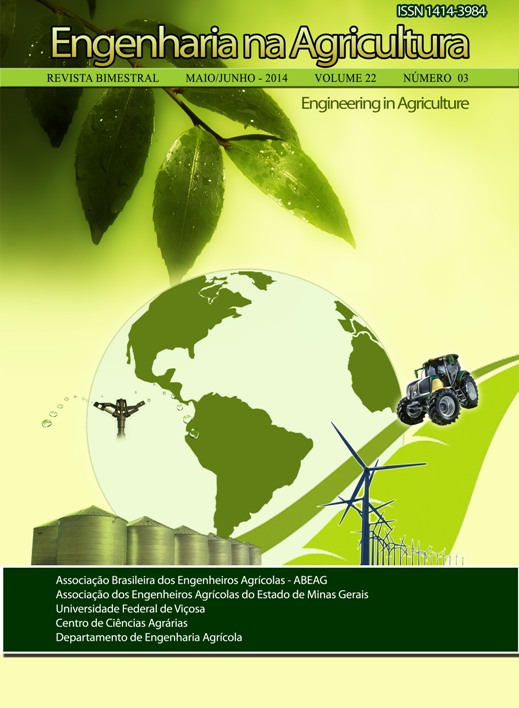AGROCLIMATIC BEHAVIOR AND EFFECT OF THE NITROGEN APPLICATION PERIOD ON AGROCLIMATIC CHARACTERIZATION OF UPLAND RICE IN MATO GROSSO - DOI: 10.13083/1414-3984.v22n03a04
DOI:
https://doi.org/10.13083/reveng.v22i3.506Keywords:
Balanço hídrico. Oryza sativa. Precipitação. Temperatura. Adubação de cobertura.Abstract
The objective of this study was to evaluate broadcasting application of nitrogen doses in a rainfed system and agronomic performance of the culture through climate monitoring. The study was conducted in an experimental area of the campus of the University of Mato Grosso - UNEMAT, located in Tangará da Serra (Latitude 14 o 39 ‘S, Longitude 57 o 25’ W and altitude of 321.5 m). A completely randomized design was utilized with five treatments and six repetitions. The treatments consisted of nitrogen doses at two periods (D1: 0/60, D2: 20/40, D3: 30/30, D4: 40/20; D5: 60/0 kg N ha-1) applied by broadcasting at the start of tillering and at the beginning of flower differentiation. The variables analyzed were: plant height, number of tillers, spikelets per panicle, panicles per m2, yield and 1000 grain weight. During the study monitoring the agronomic performance of culture was also carried out by analyzing the variables: temperature, precipitation, and calculation of the thermal time and water balance of the culture. The parceling of nitrogen fertilization application by broadcasting does not provide significant increases in productivity of upland rice when the culture is influenced by low rainfall. The months of November and March presented precipitation values below ideal to obtain satisfactory yields in the period analyzed. In the town of Tangará da Serra no restrictions to cultivation are observed considering the air temperature.Downloads
Downloads
Published
How to Cite
Issue
Section
License
Authors who publish with this journal agree to the following terms:
The author(s) authorize(s) the publication of the text in the journal;
The author(s) ensure(s) that the contribution is original and unpublished and that it is not in the process of evaluation by another journal;
The journal is not responsible for the views, ideas and concepts presented in articles, and these are the sole responsibility of the author(s);
The publishers reserve the right to make textual adjustments and adapt texts to meet with publication standards.
From submission, the author is fully conceding the paper's patrimonial rights to the publication, but retaining the owner of its moral rights (authorship and paper's identification) according to Creative Commons Attribution-Noncommercial.








 Licensed by
Licensed by 